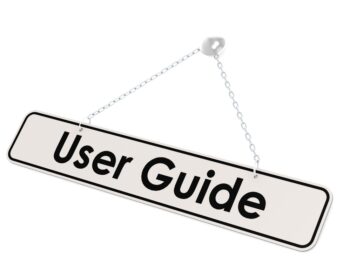
Sadly, the “vacation” of a settlement agreement is not something these people want to consider. Now is the time to draft a better settlement agreement and avoid having that hard-fought settlement agreement vacated – only to allow the injured employee payment of additional workers’ compensation benefits.
How is a Work Comp Settlement Vacated?
All settlements in workers’ compensation claims are considered fair and equitable once a compensation judge or industrial commission approves them. This allows the claiming team to close their file and move on. As a general rule, injured parties can petition to have their case reopened or vacated “for a cause.”
The definition of “cause” varies in each jurisdiction. There is general consideration in certain instances:
- Mutual Mistake of Fact: There are a variety of circumstances where such mutual mistakes can occur. This can include instances where the parties stipulate something inaccurately, and everyone misses it. Other instances include an incorrect calculation of benefits to be paid or the settlement agreement does not completely list all issues in dispute.
Click Link to Access Free PDF Download
“8 ‘Think Outside the Box’ Tactics to Settle Workers’ Comp Claims”
- Newly Discovered Evidence: Courts generally require that this evidence exists at the time of settlement but was not otherwise discovered. This can include the names of witnesses to the work injury, evidence that could be used to impeach a witness’ testimony, or there was an oversight by a medical expert when reviewing diagnostic studies and imaging.
- Fraud: Fraud is sometimes not immediately detected. Parties can seek to overturn an agreement when evidence is presented that supports the allegation. Jurisdictions are split as to whether the allegation of fraud needs to be proved and sanctioned by a court or government agency. A general rule is that fraud must be a proximate cause of the damages incurred.
- Substantial Change in Medical Condition Not Anticipated: Evidence of this includes a change in the employee’s diagnosis, a change in the employee’s ability to work, newly ascertainable permanency, and needs for more extensive medical or nursing care/assistance by the injured employee.
It is critical to be aware of these and other applicable factors that may allow a party to terminate a settlement and seek additional workers’ compensation benefits. While there is no specific way to avoid vacation of an agreement, there are steps that can be taken to reduce exposure and the chances of it occurring.
Reducing Exposure on Settlement Vacation
Several proactive steps can take place to avoid the chances of an injured employee having a second chance at additional benefits before agreeing. Working with counsel to assist in settlement negotiation and drafting the document is advisable.
- 1) List the claims and contentions of all parties: Specifically, state what a party’s position is before entering into a settlement agreement. Document the past, present, and future disputes with specificity.
- 2) Require the injured employee to acknowledge their claims: A common practice is to have written yes/no questions in a settlement agreement that require the employee to acknowledge. Questions that can be asked include whether the employee has reviewed the agreement, had an attorney explain it to them, understood the past, present, and future claims, and what benefits they are previous by entering into the settlement. For all settlements that close out future indemnity and medical benefits, always have it in the form of a written acknowledgment the employee understands their condition may worsen and require future medical care, including surgical intervention.
- 3) Include medical and vocational rehabilitation exhibits in the agreement: Some parties include a complete set of medical and vocational rehabilitation records as an exhibit to the medical agreement. While this may seem excessive, it documents the nature and extent of the employee’s injury, all communications the employee had with a treating doctor, and what care was recommended.
Compiling a complete documentary record is an added step interested stakeholders can take to make their settlement as ironclad as possible.
4) Build Your Settlement Team
Workers’ compensation stakeholders are not looking for more tasks to complete in the claims management process. Building out and defining responsibilities of each settlement team member will allow each individual to accomplish more in less time.
Claims Adjuster
The claims adjuster is the backbone of the claims handling team. The adjuster leverages the expertise of various settlement team members to ease their workload and settle claims more effectively.
Employer
The employer owns the relationship with the injured worker and is an integral part of maintaining communication, rapport, and a connection to the workplace. The employer-employee relationship will also provide insight into the desires, hopes, and dreams of the injured worker to help create a win-win settlement plan.
Settlement Advisor
A settlement advisor acts as a resource to the claim’s adjuster, risk manager, and attorney in the settlement process. They help the parties understand the settlement options available, the needs of both sides, and offer negotiation tools to help bridge the gap for a successful settlement.
Medicare Set-Aside Partner
A Medicare Set-Aside partner manages compliance with the Medicare Secondary Payer act. Leveraging the expertise of an MSA provider saves time and cost in the settlement process.
Professional Administrator
Professional administration is a support system for the injured worker AFTER the claim has settled. This service can often help bridge the gap and alleviate fears and concerns that prevent a claim from settling.
Defense Attorney
The defense attorney relationship is a key team member in facilitating settlement. Your attorney should be a fiduciary, meaning he treats you and your interests better than his own.
Conclusions
The only good file is closed. Keeping that file closed is necessary. Understanding how an agreement can be vacated will force interested stakeholders to take the necessary steps to keep it closed. Now is the time to ensure vacation does not happen in workers’ compensation.

Contact: mstack@reduceyourworkerscomp.com.
Workers’ Comp Roundup Blog: https://blog.reduceyourworkerscomp.com/
©2023 Amaxx LLC. All rights reserved under International Copyright Law.
Do not use this information without independent verification. All state laws vary. You should consult with your insurance broker, attorney, or qualified professional.















